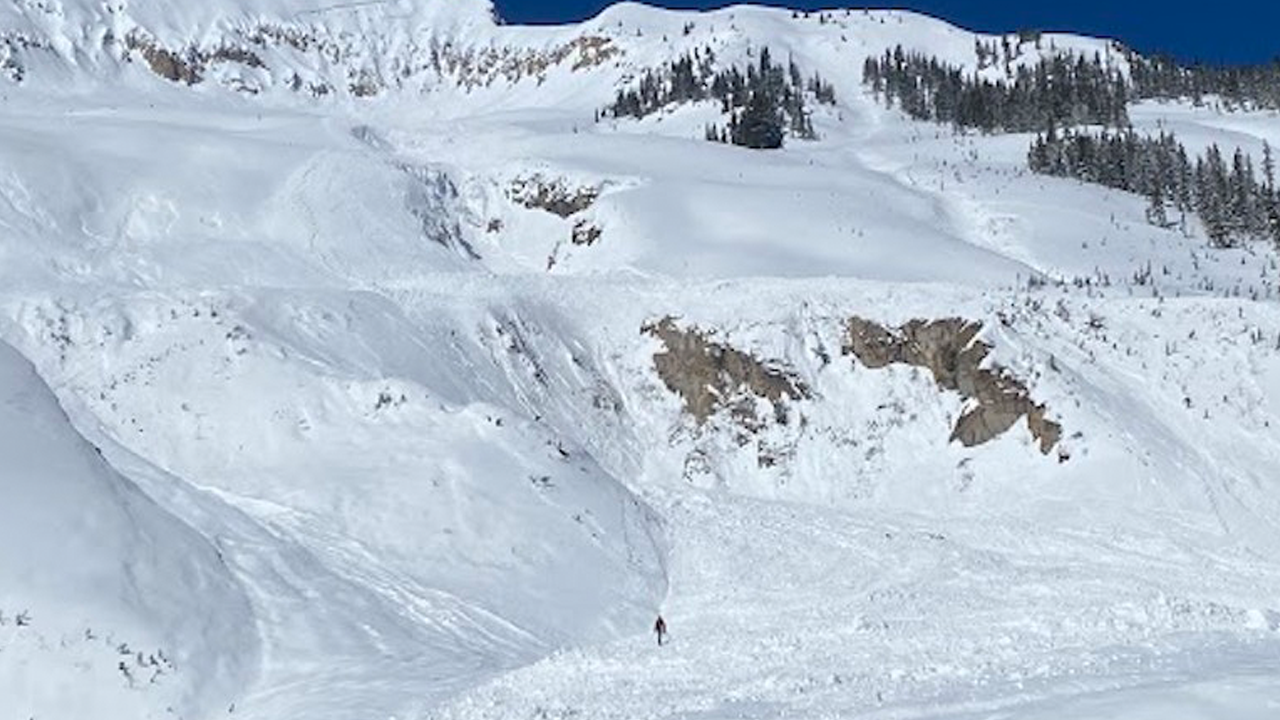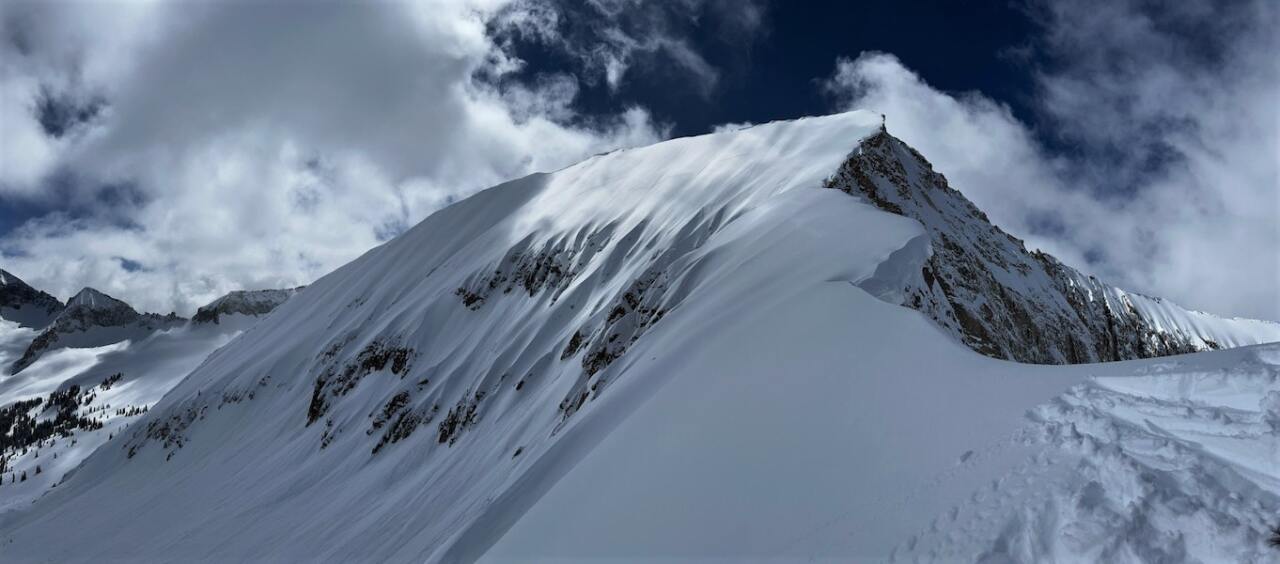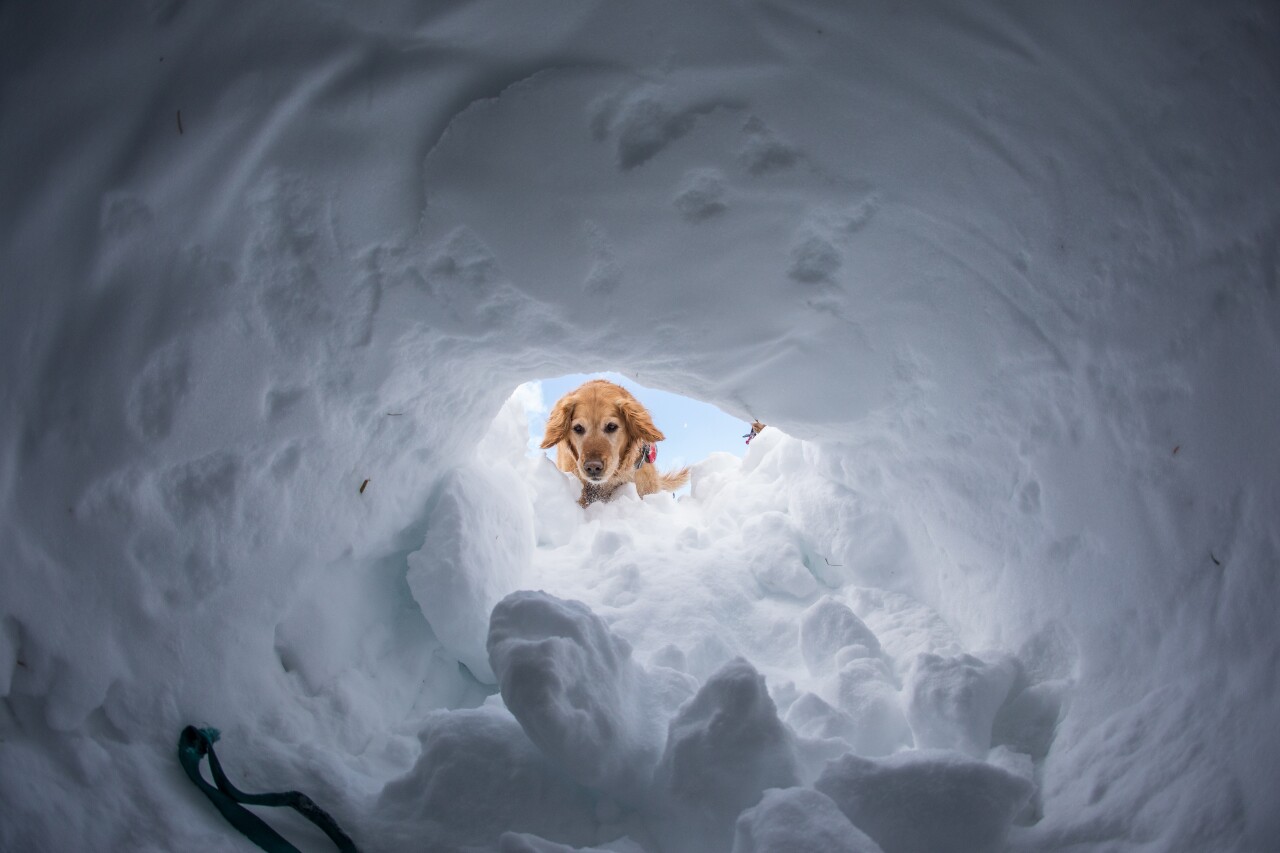GUNNISON COUNTY, Colo. — The two survivors of an avalanche southwest of Marble are recovering from the trauma of enduring a large slide that not only left them with serious injuries, but also took the life of a good friend.
The slide broke on the afternoon of March 17 on an unnamed summit near Chair Mountain.
At the time, avalanche danger was ranked as considerable, or level 3 out of 5, according to the Colorado Avalanche Information Center (CAIC).
"It is extremely fortunate that the avalanche did not kill all three people," the report reads.
Three people — a rider on a splitboard and two skiers — met near the Marble airstrip on the morning of March 17 with a goal of scouting a place in the Rapid Creek drainage for future adventures, according to the report. All three had avalanche safety equipment and two of the skiers had avalanche airbag backpacks. They often went into the backcountry together. One of the skiers brought their dog.
CAIC reported that this group was very experienced and had varying levels of advanced recreational or professional avalanche training.

Local
Man killed, 2 rescued in Gunnison County avalanche near Marble
They left the trailhead around 7:30 a.m. and reached the upper part of the drainage by noon.
Initially, they had planned to go up the main drainage, ascend a lower-angle, north-facing slope and then descend the same way, but visibility was better than they expected, so they all decided to ascend an east-facing slope to treeline and would reassess from there. Once they reached treeline, they determined that they wanted to continue up a ridge past points where they could still go down a lower-angle, north-facing slope, according to the report.
Along the way up, they all discussed their reservations, but decided to continue as a group.
They stopped at 11,800 feet. One of the skiers recalled that the group was "super psyched from the views, the terrain, and the conditions," according to the report.

The trio then decided to continue up to an unnamed summit on the main ridgeline, tour south and descend a lower-angled slope in the upper end of the drainage. They discussed some concerns and possible wind-loading, but devised a plan and decided to continue. CAIC noted that the group's plan morphed through the day and eventually ended on the goal of summiting because they had seen no signs of instability.
The rider broke trail up the east-facing slope close to ridgeline and one of the skiers followed after the rider had made about five switchbacks so they could stay spaced out. The second skier followed after that.

Around 3 p.m., the trio was within a few switchbacks of one another and 10 to 20 feet below the main ridgeline.
The second skier, the lowest in the group, then remembered hearing what "sounded like a bomb went off and everyone froze," adding that "the whole slope fractured and there was nothing we could do," according to the report.

Both skiers triggered their airbags.
The second skier reached for his dog, but he was swept off his feet.
The avalanche swept that skier about 2,500 feet and over three cliffs. He remembered that the avalanche "felt like getting thrown around in a washing machine and I had no control. I remember being airborne as I went off cliffs. I was able to wiggle as the avalanche was slowing down and felt I was close to the surface," according to the report.
When it stopped, debris was covering his face, but his right hand — now broken — was free and he painfully cleared snow so he could breathe, according to the report. He lost his skies in the slide. He began to try to dig himself out.
The slide had carried the other skier down the face and over three cliffs. It also ripped his airbag balloon from his pack and completely buried him.
The rider said he does not recall many details since he had a head injury, but remembers being airborne off a cliff and pushed around violently. He was able to self arrest using ski poles about 1,700 feet below the crown and above two of the cliffs.
The avalanche, as detailed by CAIC, was "a very large soft-slab avalanche" and, while small relative to its path, produced "enough destructive force to bury and destroy a car, damage a truck, destroy a wood frame house, or break a few trees." It broke four to six feet deep, 400 feet wide and ran 2,500 vertical feet over three cliff bands, CAIC reported.
In the week leading up to this avalanche, the CAIC had documented almost 50 avalanches that broke on facet and crust layers in the Rapid Creek area. People in the backcountry had triggered four large and one very large avalanches in the four previous days.
The group had discussed those prior avalanches before heading out and knew they wanted to avoid steep, loaded slopes.
When the avalanche stopped, the second skier yelled for help, but didn't hear a response. Because he had a broken hand, about an hour passed before he could free his other arm, according to the report.
He then spotted the rider about 1,000 feet above him and the two were able to connect over radio. The rider repeated over and over that he "was really messed up," the report reads. He started to make his way down the hill and disappeared into the trees.
The rider later said that he does not remember seeing the skier, but does recall walking through the snow at sunset, hearing and seeing a helicopter, and once he reached the road, walking several miles toward the house of people he knew. He arrived around 3 a.m. and the residents welcomed him inside and warmed him up. He called his partner around 3:30 a.m. to let her know what happened, according to the report.
An ambulance then took him to the hospital.
About three hours after the trapped skier saw the rider leave the area, he was able to free himself enough to grab his backpack and trigger the SOS on his InReach device at 5:55 p.m. The Gunnison County Sheriff’s Office received this notification.

Using his shovel, he worked for another 30 minutes to free himself. The skier then started to look for the other skier.
He found a signal uphill, but his avalanche probe was clogged with debris and unusable, so he began digging. About four feet down, he found the transceiver, but it had been ripped from the other skier's pocket.
The skier decided he had to leave the scene since he was struggling with pain, exhaustion, hypothermia and frostbite. He walked downhill and found their tracks from that morning. About three-quarters of a mile from the slide, he needed to rest and dug himself a small shelter under a tree, according to the report.
He said he had limited communication with emergency responders through his InReach and wasn't sure if anybody was coming.
Around 12:40 a.m. the following day, March 18, he heard a helicopter. After several sweeps around the drainage, the Flight for Life located the skier and he was rescued just after 1 a.m.
He was brought straight to a hospital, where staff said his core body temperature had dropped to 85 degrees, CAIC's report reads.
Around sunrise on March 18, the sheriff's office and West Elk Mountain Rescue continued its rescue and recovery efforts.

Local
Colorado nonprofit is leading the way for avalanche dog training
CAIC staff and a member of Aspen Mountain Rescue were flown to the avalanche to continue searching for the other skier. They also found his detached avalanche transceiver.
The group found the man's body under about three feet of avalanche debris nearby.
CAIC learned that he had deployed his avalanche bag but the bag was ripped out of his pack and while he carried an avalanche receiver, it was only attached by a lanyard.
"The damage to Skier 2’s equipment is a good reminder that safety equipment can reduce, but not eliminate, the consequences of getting caught in an avalanche," the CAIC wrote in the report.
While at the scene of the slide, the rescuers also noted dog tracks leaving the avalanche debris below the second cliff band. The tracks followed the skin track down the drainage and onto Gunnison County Road 3. However, as of Saturday, the dog has not been found.

National
Most avalanche deaths caused by human activity
Upon an analysis of the avalanche, CAIC noted if the trio had maintained enough spacing when going up the switchbacks toward the summit, it is possible they would not have all been caught in the slide.
Both the surviving skier and rider were close to death and they survived thanks to luck, fitness, and their will to continue on, the report reads.
According to CAIC records, in the 2022-2023 season, 19 people have been caught, 15 people have been buried and 10 people have died in avalanches.




